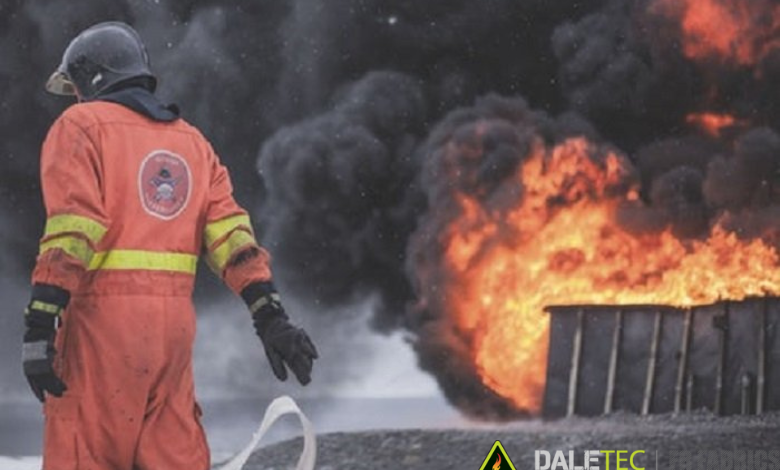What do you know about workwear fabric & Protective Fabric?

Workwear materials are essential in everyday life. It’s difficult to stay up with all of the latest technology and ideas when the world evolves so rapidly. Companies and factories work 24 hours a day, seven days a week to create the greatest and most reliable products possible in order to improve people’s lives. Significant progress, on the other hand, comes at a heavy price. To achieve these objectives, manual labor and high-efficiency machines collaborate, and dangers are unavoidable when physical labor is involved. When working with electrical equipment, there is a significant risk of fire, putting employees’ lives in jeopardy.
What are Workwear Textiles?
When the world changes so quickly, it’s challenging to keep up with all of the latest technologies and ideas. Companies and manufacturers labor around the clock, seven days a week, to make the best and most dependable products possible to better people’s lives. On the other hand, significant advancement comes at a high cost. Manual labor and high-efficiency machines work together to attain these goals, and hazards are inescapable when physical labor is involved. There is a substantial risk of fire when working with electrical equipment, putting employees’ lives at hazard.
Every year, around 50,000 employees in the United States are wounded or died as a consequence of work-related injuries. These organizations and workplaces have significant accident and death rates, necessitating protection. The dangers are greatly decreased by using these materials. These protective textiles workwear fabric are often tough, with the ability to withstand several washing cycles while maintaining FR characteristics in workplace materials. Despite their versatility, they are basic and practical, making them ideal for employees who want to maintain their work attire pleasantly and useful.
The Purpose of Workwear Textiles
The oil and gas sectors are good instances of where textiles are needed since there are frequent dangers and the fabric used in these professions is often dirty. These protective textiles are fashioned from materials used by workers in environments where flames occur often. The cloth is fire-resistant and may be used to hold garments. Electric arcs, flashes, batteries, wounds, and other perils are among the dangers that these materials are designed to guard against.
Workwear cloth or fabric is a term used to describe fabrics used in the workplace or for gear. Its purpose is to protect personnel from heat and fire. This material is self-extinguishing and fire-resistant mechanically. Smoking, soldering, explosions, power outages, and other electric risks may all be avoided with these barriers. The materials are made to keep dangerous flames and burns out of the body of the user.
Those who labor in hazardous settings use workwear fabric. Fabrics made of cotton and linen, as well as synthetic fibers like polyester and aramid, are flammable. Abrasion-resistant flame retardants that are flexible, low-weight, waterproof, absorbent, and lightweight are also required, as is fiber melting drops that fulfill the standards of high-end flame retardants and decorative textiles.
Different Types of Protective Textiles
Leather
Leather is a typical protective substance; nevertheless, because it is a component of the flesh, it is not an animal. Natural fibers, such as leather, are a good example. Natural leather is a form of leather. Leather was utilized as a protective material since the individual’s primary battle weapons were swords and shields. Leather shoes from this company are noted for their durability and beauty.
Polyamide
Polyamide Nylon is another name for this fabric. This durable protective fabric is constructed of man-made and thermoplastic materials. It’s also resistant to heat and sequence. Because of its lightweight, it is very easy to breathe and wear.
Protective Textiles
They might be natural or created by humans. They may assist a person in a multitude of ways in a stressful situation and are extremely calm and respirational.
Quilted
People have relied on these soothing, one-of-a-kind materials for years. Protective materials are available in a range of colors and thicknesses to meet your specific requirements. They have a particular look about them. On top of it, an additional polyester coating is put on the two layers of insulation.
Cotton
Organically farmed cotton is fully natural. It’s also a great soft tissue that, when done right, may appear quite appealing.
What’s the best method to keep your Protective Cloths clean?
To disinfect these items, use cold water or dihydrogen monoxide. Use cold water or dihydrogen monoxide to clean these items. Chlorine, cotton, and any fatty or starchy soap or starch soap should be avoided when washing since they decrease the material’s capacity to withstand fire and put the person’s life at risk. Bleach, cotton smother, and any soap with high fat or starch content should not be used to clean the material since they will reduce its fire resistance and endanger the individual’s life.




